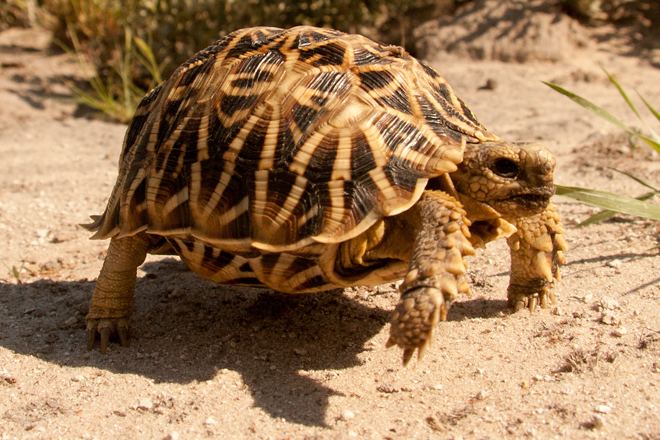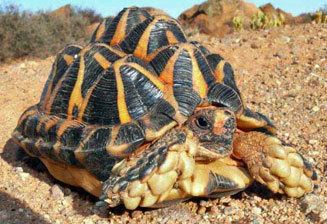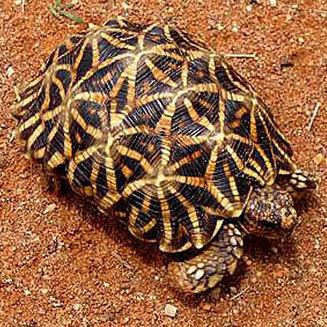Phylum Chordata Order Turtle | Class Reptilia Family Testudinidae Rank Species | |
 | ||
Similar Psammobates, Serrated tortoise, Turtle, Homopus areolatus, Homopus femoralis | ||
The tent tortoise (Psammobates tentorius) is a species of tortoise and one of three members of the genus, Psammobates. Known locally as the Karoo tent tortoise, this highly variable species is found in the Karoo and semi-desert regions of Southern Africa.
Contents

20100807 tent tortoise
Distribution

The Karoo tent tortoise occurs at very low densities throughout the Karoo and other semi-desert areas of southern Africa, extending from central Namibia almost to the southern coast of South Africa.
Within this range, its population is very sparse and individuals are normally rare and widely separated. The species is also increasingly rare due to habitat destruction and illegal collecting for the pet trade. Due to its specific diet of certain Karoo plants, this species rarely survives in captivity and usually soon dies when taken outside of its natural habitat.
Identification

The Karoo tent tortoise is a very variable species, with at least three subspecies. Its shell is dark brown or black with a pattern of yellow or orange striped stars radiating from the centre of each domed shield making up the carapace. The tent tortoise has a beautiful geometric pattern of' Bedouin tents' on its upper shell, and this is appropriate, for it is quite at home in the semidesert. The colouring and size of this little tortoise vary greatly, particularly from one area to another but also within a single 'population'. Occasional specimens are a uniform brown, though this is very rare. Male specimens are much smaller than the females, and have concave bellies.

Although this species shares much of its superficial outer appearance with its relatives in the genus Psammobates, it can easily be distinguished by its un-serrated shell margins, and the scutes along its shell bridge, which are broader than they are high.
Subspecies
Three subspecies are recognised by biologists:
Behaviour
The female tent tortoise lays a clutch of one to three eggs, and buries them in the sand as all other tortoises do. The young emerge in late summer or early autumn.
Diet
They depend on a very specialised diet including assorted Karoo bushes, mesem-bryanthemums and other South African succulents. Due to its specialised diet, this little tortoise does not usually survive in captivity and usually soon dies when taken outside of its semi-desert habitat.
